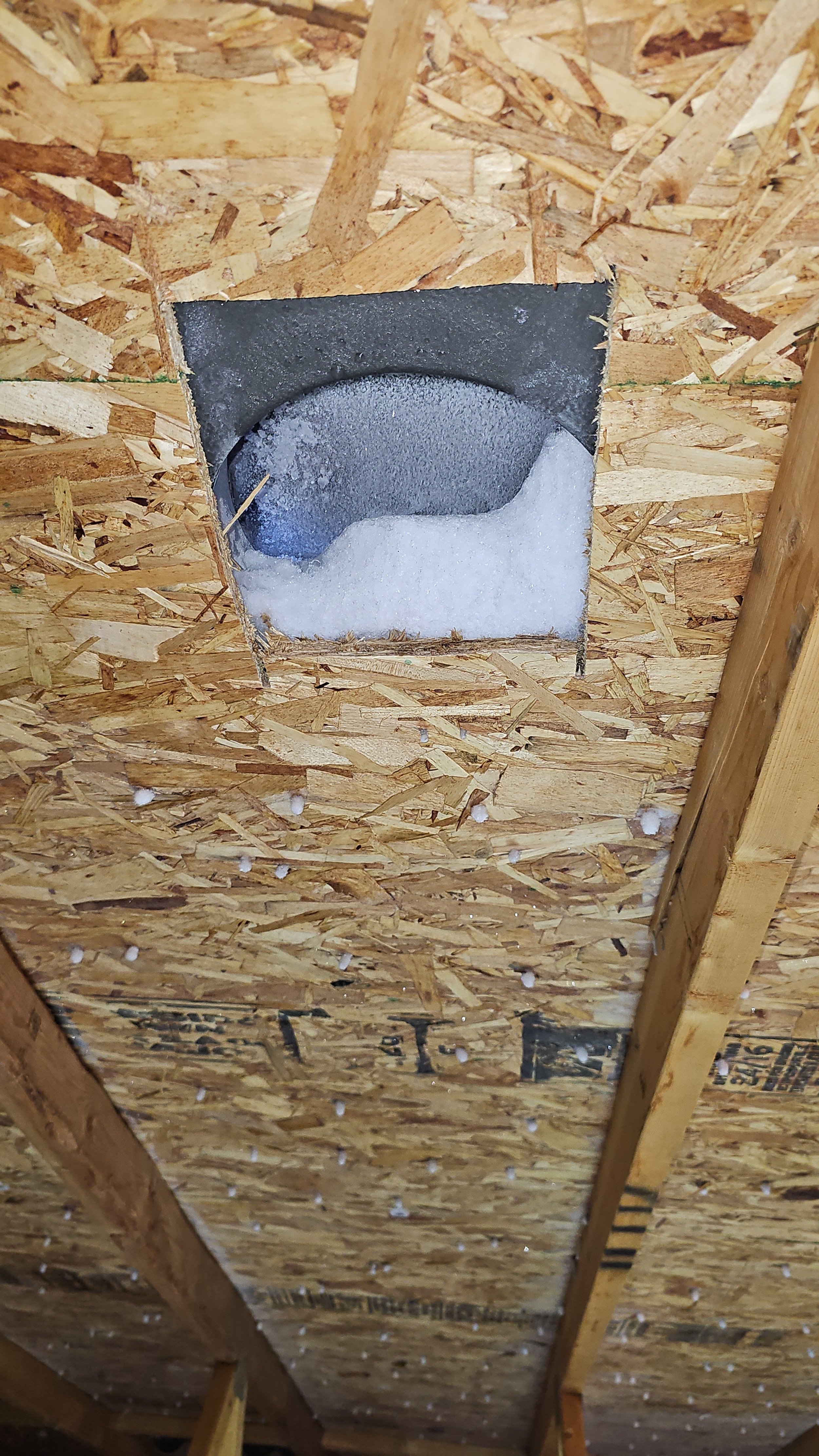Ice in the Attic: Why It Forms and How to Prevent It
Winter brings its fair share of challenges, and for many homeowners, one particularly frustrating and mysterious issue is the formation of ice in the attic—often visible as frost or ice on nail heads. While it may seem minor, this problem can lead to significant structural and moisture-related issues if left unaddressed. In this blog, we’ll uncover the causes of attic ice formation and, more importantly, provide solutions to prevent it from occurring in the first place.
What Causes Ice in the Attic?
The formation of ice in the attic or on nail heads is a sign of excess moisture meeting cold temperatures. Here’s a breakdown of the most common causes:
Poor Ventilation: Inadequate airflow in the attic traps warm, moist air that rises from the living spaces below. When this warm air contacts cold surfaces (like the metal nails or decking), condensation forms, which can freeze in winter.
Air Leaks from the Living Space: Tiny cracks or gaps around light fixtures, bathroom fans, plumbing vents, and attic hatches can allow warm, moist air to seep into the attic. This air freezes when it contacts cold surfaces in the attic.
Improper Bathroom or Kitchen Venting: Ventilation fans from bathrooms and kitchens are sometimes directed into the attic instead of being properly vented to the outside. This introduces significant moisture into the attic space.
Inadequate Insulation: Poorly insulated attics allow heat from the home to rise and warm the attic space, creating the perfect conditions for condensation and ice formation.
High Indoor Humidity Levels: High humidity levels inside the home can exacerbate attic moisture problems, especially if there is no proper barrier to prevent this moist air from entering the attic.
Why Is Ice Formation a Problem?
Ice or frost in the attic might melt during warm spells, causing water to drip onto the attic floor, insulation, and even the ceiling below. Over time, this can lead to:
Mold Growth: Persistent moisture provides a breeding ground for mold and mildew, which can impact air quality and cause health issues.
Wood Rot: Continuous exposure to moisture can weaken wooden beams, rafters, and other structural components of the attic.
Reduced Insulation Effectiveness: Wet insulation loses its thermal resistance, making your home less energy-efficient.
Ceiling Damage: Melted ice can lead to water stains, leaks, and even sagging ceilings.
Solutions to Prevent Ice in the Attic
Fortunately, you can take several steps to address and prevent attic ice formation:
Seal Air Leaks: Use caulk, spray foam, or weatherstripping to seal gaps around light fixtures, electrical boxes, attic hatches, and plumbing vents. Preventing warm air from entering the attic is the first line of defense.
Improve Attic Ventilation: Ensure your attic has proper ventilation, including soffit vents, ridge vents, or gable vents, to allow for adequate airflow. This prevents warm, moist air from being trapped in the attic.
Vent Exhaust Fans Properly: Bathroom and kitchen exhaust fans should vent directly outside, not into the attic. Inspect venting systems to ensure they are correctly installed.
Upgrade Insulation: Proper insulation in the attic prevents heat transfer from the living areas below. Consider adding insulation or upgrading to materials with a higher R-value for better energy efficiency.
Monitor Indoor Humidity Levels: Use a hygrometer to keep track of indoor humidity. Ideally, indoor humidity levels should be between 30% and 50% during the winter months. If needed, use a dehumidifier to reduce excess moisture in your home.
Regular Attic Inspections: Periodically check your attic during the winter months for signs of frost or ice. Catching the problem early can prevent more extensive damage.
When to Call a Professional
If you’ve implemented these solutions and are still experiencing ice formation in your attic, it may be time to consult a professional. An experienced contractor or home inspector can evaluate your attic’s insulation, ventilation, and overall condition to identify the root cause and recommend appropriate remedies.
Conclusion
Ice forming in your attic or on nail heads is more than just a nuisance; it’s a sign of underlying issues that need attention. Addressing poor ventilation, sealing air leaks, and managing indoor humidity can prevent ice formation and protect your home from costly damage. With a proactive approach, you’ll keep your attic—and the rest of your home—safe, dry, and comfortable all winter long.

